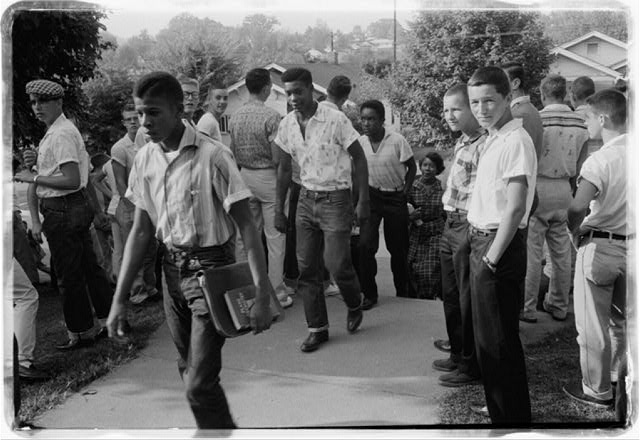
Nearly 65 years ago, the U.S. Supreme Court ruled unanimously in Brown v. Board of Education that separate schools for black and white children were not and could never be equal. As we navigate continuing threats to educational equity in the present, we invite you to learn more about the history of Brown and its legacy through these six resources.
Eyes on the Prize: America’s Civil Rights Movement
This seminal documentary traces America’s Civil Rights Movement using rare historical film and retrospective interviews. The documentary covers a wide historical sweep from 1954 to the mid-1980s and offers a deep dive into African Americans’ rejection of “separate but equal" in education, as well as the desegregation and busing of the Boston Public Schools. We invite you to stream Eyes on the Prize for free and in its entirety via Facing History's virtual library.
The Road to Brown
This film tells the story of the legal campaign against segregation that launched the Civil Rights Movement. It is also a moving tribute to a visionary black lawyer—Charles Hamilton Houston—known as “the man who killed Jim Crow.” This film provides a concise history of how African Americans struggled for full legal equality under the constitution beginning with the policy of segregation sanctioned by the 1896 Plessy v. Ferguson decision, the cases Houston waged during the 1930s, and the 1954 Brown v. Board of Education decision that overturned Plessy. We invite you to stream The Road to Brown via our virtual library.
Warriors Don't Cry
Following the landmark 1954 Supreme Court ruling in Brown v. Board of Education, Melba Pattillo became a warrior on the front lines of a civil rights firestorm. Warriors Don’t Cry is her autobiographical account of the integration of Central High School in Little Rock, Arkansas in 1957. Here she explores not only the power of racism, but also the meaning of justice, identity, and choice. We invite you to view or download Facing History's Warriors Don't Cry study guide to learn more.
Little Rock Central: 50 Years Later
The wave of desegregation that transformed the South during the 1960s began in Little Rock, Arkansas in September 1957. After Arkansas Governor Orval Faubus defied the Brown v. Board of Education ruling and ordered the National Guard to prevent nine black teenagers from entering Central High School, President Dwight D. Eisenhower responded by sending troops to protect the students as they entered the building. To mark the 50th anniversary of the forced desegregation of Central High School, two Little Rock natives took a candid look at the lives of contemporary Central High students in this documentary. Sharing the stories of both black and white students, the film uncovers the opportunities and challenges facing them in and out of the classroom; and suggests that though black and white students now attend school together, social inequities remain in Little Rock and the United States at large. Little Rock Central: 50 Years Later is available via our lending library.
Choices in Little Rock
This Facing History resource looks at efforts to desegregate Central High School in Little Rock, Arkansas, in 1957 and explores civic choices—the decisions people make as citizens in a democracy. Here you will find teaching strategies and primary sources that cover themes of identity, race, prejudice, racism, and choice—and explore the relationship between the individual and society. The Choices in Little Rock teaching unit offers historical background and an examination of the decisions that people in Little Rock and elsewhere made in response to Brown v. Board of Education during the 1957–1958 school year.
Hoxie: The First Stand
This documentary tells the story of one of the earliest and most important—yet least remembered—school integration battles in the South. In the summer of 1955, the school board of a small, rural Arkansas town voluntarily desegregated its schools. But the newly formed White Citizens' Council saw this as a test for southern resistance to the Supreme Court's desegregation decision and soon descended on the town. The school board would hold its ground and ultimately drew the federal government into a case that nullified state segregation laws. Segregationist leaders were so furious over the loss that they turned on Governor Faubus in the next primary, forcing him out of his previous moderate stance and setting up the 1957 confrontation in Little Rock, Arkansas. Hoxie: The First Stand is available to stream from Facing History's virtual library.
Facing History and Ourselves invites you to stream the seminal documentary Eyes on the Prize—particularly episode 13, ”The Keys to the Kingdom (1974-1980)”, concerning the desegregation and busing of Boston Public Schools.
Note: This is an updated version of a post that was originally published by Julia Rappaport on May 16, 2014 for the 60th Anniversary of Brown v. Board.


